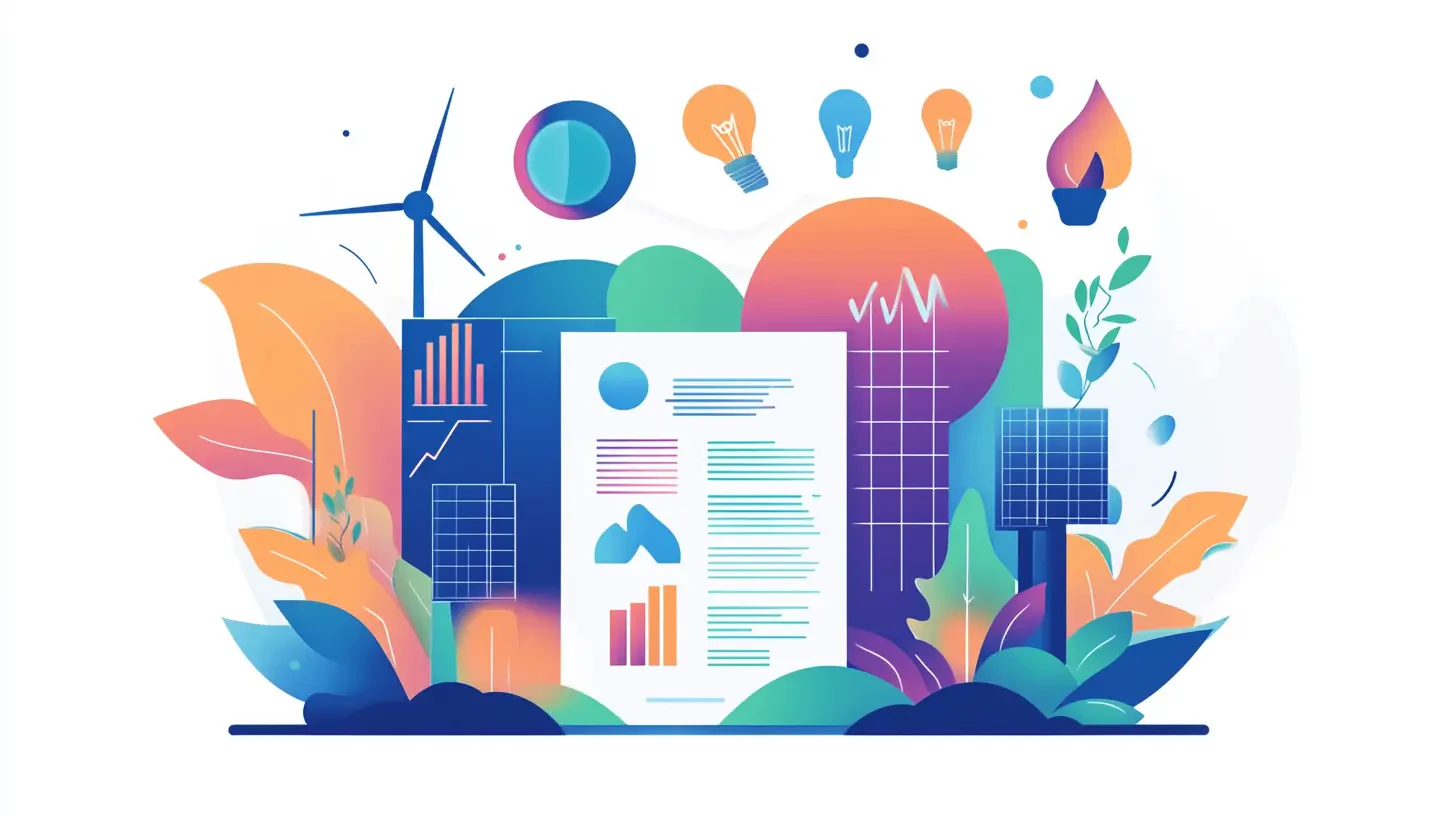Where Do Greenhouse Gases Come From? Exploring Their Sources and Impact on Daily Life

Over the past several decades, global warming has become a major issue drawing attention worldwide. One of the main causes of this problem is greenhouse gases, which play a role in absorbing and trapping heat in the atmosphere. Although this is a natural mechanism essential for sustaining life, excessive accumulation caused by human activities has led to severe impacts on the climate, ecosystems, and global stability across multiple dimensions.
What are greenhouse gases?
Greenhouse Gases (GHGs) are a group of gases in the Earth's atmosphere that have the ability to absorb and retain heat, or infrared radiation, reflected from the Earth's surface after it has received energy from the sun. These gases play a crucial role in maintaining the Earth's temperature at a level suitable for life. Without greenhouse gases, the Earth's average temperature would be about 33 degrees Celsius lower than it is today—making it uninhabitable for most forms of life.
The mechanism by which greenhouse gases absorb infrared radiation is due to the unique properties of their molecules. For example, carbon dioxide (CO₂) has a molecular vibration pattern that can cause temporary charge separation, creating what is known as an "electric dipole." This allows the gas to absorb infrared radiation. After absorbing heat energy, these gases re-emit it in all directions, causing some of the heat to be reflected back to the Earth's surface.
There is a distinction between "greenhouse gases" and the "greenhouse effect", explained as follows:
- Greenhouse gases refer to gases that can absorb and emit thermal radiation, such as carbon dioxide, which is the most abundantly emitted greenhouse gas, accounting for approximately 75% of total greenhouse gas emissions.
- The greenhouse effect refers to the phenomenon where heat radiation from the Earth's surface is absorbed by greenhouse gases and then radiated back toward the surface. This process results in a warming effect that helps maintain the Earth's temperature at levels suitable for life.
However, the current accumulation of greenhouse gases in the atmosphere has exceeded the natural equilibrium. This excessive concentration is causing a continuous rise in global temperatures and significantly impacting the world’s climate systems.
Types and Key Properties of Greenhouse Gases
The primary greenhouse gases contributing to global warming can be classified into seven types. Each type has distinct characteristics and sources of origin, as outlined below:
1. Carbon Dioxide (CO₂)
This is the most abundant greenhouse gas released into the atmosphere, accounting for approximately 76% of total emissions. It can remain in the atmosphere for up to 200 years. The main sources include the combustion of fossil fuels such as coal, oil, and natural gas, as well as deforestation.
The Global Warming Potential (GWP) of CO₂ is set at 1, serving as the standard benchmark for comparing the warming impact of other gases.
2. Methane (CH₄)
Methane is the second most prevalent greenhouse gas, contributing around 16% of total emissions. It has an average atmospheric lifespan of about 12 years and can trap heat approximately 28 times more effectively than CO₂.
Key sources include the anaerobic decomposition of organic matter, agricultural activities, livestock farming, and landfills.
3. Nitrous Oxide (N₂O)
Accounting for roughly 6% of total greenhouse gas emissions, nitrous oxide can persist in the atmosphere for over 100 years. It has a GWP 265 times greater than CO₂.
Major sources include biological processes in soils and oceans, the use of nitrogen-based fertilizers in agriculture, and the combustion of certain fuels.
4. Fluorinated Gases (F-gases)
Although they represent only about 2% of total emissions, fluorinated gases are extremely long-lived—ranging from 100 years to over 50,000 years—and have very high GWPs, making them significant contributors to global warming.
This group includes:
- Hydrofluorocarbons (HFCs): Used in refrigeration systems such as refrigerators and air conditioners
- Perfluorocarbons (PFCs): Employed in aluminum smelting and electronics manufacturing
- Sulfur Hexafluoride (SF₆): Has a GWP of up to 22,800; used as an insulator in high-voltage electrical systems and in the rubber industry
- Nitrogen Trifluoride (NF₃): Has a GWP of up to 17,200; used in the production of electronic devices and microcircuits
The GWP of each gas depends on its ability to absorb infrared radiation and the duration it remains in the atmosphere, relative to carbon dioxide, which serves as the reference point for assessing the impact of other greenhouse gases.
Primary Sources: Nature vs. Human Activities
A comparison between natural and human-made sources of greenhouse gases reveals key differences in both quantity and environmental impact.
Natural Sources:
- Volcanoes: Volcanic eruptions release carbon dioxide into the atmosphere, but in quantities roughly 50 times less than those emitted by human activities.
- Natural Carbon Cycle: Carbon circulates through ecosystems—between soil, rocks, water bodies, the atmosphere, and living organisms—in a balanced process that has been ongoing for billions of years.
- Lightning: Natural phenomena like lightning can produce nitrous oxide, one of the key greenhouse gases.
Human-Induced Sources:
- Fossil Fuel Combustion: The leading source of greenhouse gas emissions, accounting for around 80% of total emissions.
- Livestock Farming: Emits methane through digestive fermentation in ruminant animals and from manure management.
- Deforestation: Converting forested areas into land for grazing or animal feed cultivation significantly reduces the Earth’s capacity to absorb carbon dioxide.
- Chemical Fertilizer Use: Leads to the emission of nitrous oxide, with agriculture contributing approximately 74% of global emissions of this gas.
- Waste Management: Landfilling organic waste produces methane, a greenhouse gas with 28 times more warming potential than carbon dioxide.
Controllable Strategies for Reducing Greenhouse Gases:
- Reduce Fossil Fuel Use in transport and industry by promoting renewable energy and low-emission technologies.
- Transform Food Production Systems toward eco-friendly organic agriculture and reduce dependency on chemical inputs.
- Cut Down Meat Consumption, particularly beef, which requires 15–20 times more natural resources than plant-based protein.
- Expand Forest Areas to enhance carbon dioxide absorption and restore ecological balance.
Mitigating greenhouse gas emissions is a shared responsibility among governments, businesses, and individuals. If all sectors cooperate in changing behaviors and supporting sustainable practices, it can help slow global warming and preserve the planet’s environmental equilibrium for future generations.
Impact on Global Warming and Climate
Global warming intensified in 2025, with the global average temperature in January 2025 reaching 1.75 degrees Celsius above pre-industrial levels. According to forecasts by the Met Office, the average surface temperature for the year is expected to range between 1.29–1.53 degrees Celsius.
The continued rise in greenhouse gas emissions from human activities has led to an ongoing increase in atmospheric CO2 levels. Thailand is projected to reach its highest greenhouse gas emissions in 2025 at 368 million tonnes of carbon dioxide equivalent.
Notable Impacts in 2025:
- Extreme Weather: Intensified storms and rainfall have become more frequent and severe, with an increased number of heavy rainfall days and longer durations. The frequency of typhoons has also risen, resulting in more frequent and severe flash floods. However, Thailand has dropped from 9th to 30th place in the global ranking of countries most at long-term risk from extreme weather.
- Sea Level Rise: In 2024, sea levels rose by 0.59 cm per year—higher than the initially projected rate of 0.43 cm per year—putting many coastal cities at greater risk of flooding.
- Health: Global warming continues to impact human health, contributing to deaths from heatwaves, respiratory diseases, and vector-borne illnesses such as those transmitted by mosquitoes and insects, along with mental health issues.
- Economy: The economic impact of global warming could reach as high as $38 trillion annually by 2049. In Thailand, the economy in 2025 is expected to slow down, with GDP growth forecast at 2.4%.
- Food Security: Thailand ranked 64th out of 113 countries in the 2022 Global Food Security Index, a drop of 13 places from the previous year. Climate change is projected to drive up agricultural crop prices by over 29% and significantly reduce yields over the next 25 years.
To address the long-term impacts of global warming, Thailand must urgently implement robust environmental policies, promote clean energy, adapt its economy and agriculture, and enhance international cooperation. These efforts are essential for building a sustainable future across society, the economy, and the environment.
How to Reduce Greenhouse Gas Emissions at the Individual and Organizational Levels
Reducing greenhouse gas emissions is a shared responsibility between individuals and organizations. It plays a crucial role in slowing global warming and fostering environmental sustainability. Here’s how both parties can contribute:
At the Individual Level:
Individuals can help reduce greenhouse gas emissions through everyday behaviors, such as:
- Energy Conservation: Choose energy-efficient electrical appliances and use them mindfully to avoid unnecessary energy consumption.
- Transportation: Opt for public transportation, bicycles, or electric vehicles, which emit less carbon than conventional fuel-powered cars.
- Food Consumption: Reduce meat intake and prioritize plant-based foods, helping to cut emissions from the livestock sector.
- Efficient Use of Resources: Limit consumption of unnecessary goods and extend the lifespan of clothing and equipment to avoid excess production and waste.
- Tracking Carbon Footprint: Use applications or digital tools to calculate emissions from daily activities and adjust behaviors accordingly.
At the Organizational Level:
Organizations can significantly reduce emissions through systematic management approaches, such as:
- Carbon Footprint Assessment: Analyze emissions throughout all stages of operations, including direct processes (Scope 1), energy use (Scope 2), and the supply chain (Scope 3).
- Use of Renewable Energy: Transition to solar, wind, and other clean energy sources to replace fossil fuels.
- Efficient Energy Management: Implement an Energy Management System (EMS) to enhance energy efficiency across the organization.
- Carbon Credit Trading: Participate in carbon credit mechanisms to offset unavoidable emissions.
- Forest Restoration and Conservation: Support reforestation and ecosystem preservation projects to increase carbon dioxide absorption.
- Upgrading Production Technologies: Invest in technologies that reduce emissions, such as carbon capture, utilization, and storage (CCUS).
- Environmental, Social, and Governance (ESG) Reporting: Transparently and consistently publish sustainability progress reports.
Reducing greenhouse gas emissions not only helps mitigate environmental impacts but also benefits the economy and society. Organizations that move toward low-carbon strategies gain trust from consumers, investors, and the public—and strengthen their competitiveness in a future where sustainability is a key market driver.
Role of International Policy and Thai Law
Thailand has been a party to the Kyoto Protocol since 2002, which required developed countries to reduce greenhouse gas emissions by 5% by 2012 and by 18% by 2020. Later, Thailand ratified the Paris Agreement in 2016, which aims to keep the global temperature rise well below 2 degrees Celsius, while pursuing efforts to limit the increase to 1.5 degrees Celsius.
Thailand has declared its goal to achieve carbon neutrality by 2050 and net zero greenhouse gas emissions by 2065. The country has also enhanced its Nationally Determined Contribution (NDC) target to reduce emissions by 40% from the business-as-usual scenario by 2030.
On the economic policy front, Thailand plans to introduce a carbon tax as early as late 2024 or in the 2025 fiscal year. The initial phase will focus on oil and petroleum products, with a starting rate of 200 baht per ton of carbon.
The Thailand Greenhouse Gas Management Organization (TGO), established in 2007, plays a crucial role in analyzing and certifying greenhouse gas reduction projects, promoting project development and carbon markets, and serving as the central data hub for greenhouse gases. TGO also drives initiatives in six key areas: policy, technology, trade and investment, carbon credit market mechanisms, carbon sinks and greenhouse gas removal, and legal frameworks. This includes the development of provincial-level greenhouse gas reduction strategies aimed at achieving net zero.
These legal frameworks and incentives reflect Thailand’s commitment to global climate change goals, integrating policy measures, legal instruments, and economic mechanisms to drive progress.
About Optiwise
Optiwise offers Investor Relations & ESG consulting services, corporate website design, and IR website development. We also provide advisory services for initial public offerings (IPOs) and assists in preparing disclosure documents for public companies. Additionally, our public relations efforts aim to build credibility and enhance the corporate image.
For more information about Optiwise's services, please contact us here.


